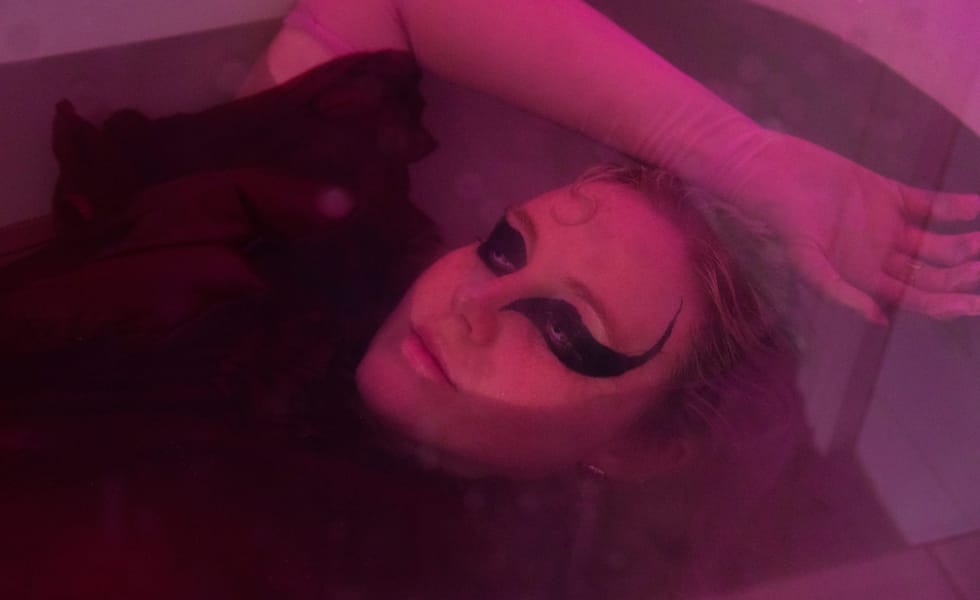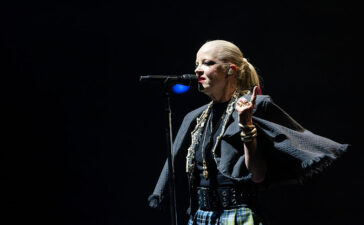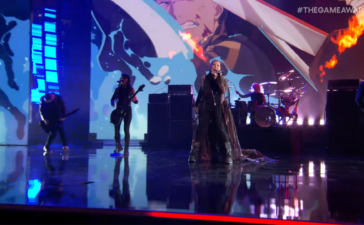Grace Stevenson, the artist behind Rebel Yell, doesn’t necessarily hate club music.
You wouldn’t be mistaken for assuming that she does, given that the first single from her upcoming album, Fall From Grace, was titled as a direct opposition to it.
“Now that techno’s become popular”, she explains, “there’s these techno bros that go to the shows and follow these people that were really cool before, but now their whole audience has changed. And therefore what’s changed is the enjoyment of those spaces.” She adds that what ‘Anti-Club Music’ is about is “talking about how the underground DIY rave culture is more comfortable to perform in, and to be in, than these techno sort of club spaces.”
Heralding from Queensland, Stevenson moved to Sydney about two years ago, entering into a crowded scene that was a far cry from what she was used to. Leaving behind a stable career path and closeness to her family, Stevenson was on her own for the first time, trying to pursue music as a full-time job. It was at that point that she started working on Fall From Grace, faced with the decision “between this Grace person or Rebel Yell.”
“I almost thought about stopping music”, she reflects. “And then I went into the studio and recorded this album and it sort of brought back my reasoning for doing it again. The whole album is this thought process of how I balance these two lives.”
The life of Grace Stevenson sees a girl who enjoys making music being told that her brand of techno is “confronting”, despite being a “nice and light” person who is “very different to that Rebel Yell sort of sound and persona” in her everyday manner. She uses Rebel Yell to confront those who have judged her, even those back home.
“The whole album is this thought process of how I balance these two lives.”
“I went through a breakup in Brisbane”, she tells. “People aren’t very nice in Brisbane. They all gossip a lot. All of my diss tracks are for people in Brisbane.” Compared to her home, Sydney’s scene has been more welcoming, though Stevenson has gone through another breakup since the virus thrust us all into closer proximity. “Everything sort of seems angry and confronting”, she points out about her music, “but I structure the songs like pop songs. But when I go to play with my drum machine and make it, [the music] comes out really heavy.”
On stage, you would never be able to tell that Stevenson had battled her own demons. With a focus on aesthetics, her upcoming performances would have seen her teaming up with a friend to create custom outfits. “They’re actually really colourful”, she laughs, “and she writes all over them, writes like thoughts and things. She’s written them based on me and they’re very colourful and quite opposite to what you’d usually associate with techno.”
Stevenson is excited to make the statement when she can play music live again, middle fingering the black t-shirts of techno with something fun that will “contradict the music.” Even her album cover – her face covered in diamonds – suggests a break in the mould of traditional graphic design dominating every techno album cover ever.
“It’s funny because I remember when it happened, I posted a picture on Instagram and people said they thought it was a filter. And they were trying to click on it and use the filter. But it was actually these little stickers, a sticker pack…They kept popping off and I’d have to put them back on”, she cheekily notes.
Stevenson’s brand of techno, of reflecting on her own experiences to create club music that runs deeper than a beat, is resonating worldwide. Having played sets in techno capitals like Vienna, London, Iceland, Bristol and Berlin, she’s anticipating a fuller engagement with European audiences as soon as possible in addition to doing a run at home.
In the meantime, she’ll enjoy listening to what she likes – techno, pop and industrial. “That’s sort of where I want to be”, she admits. “But it comes out a bit harder than I intend.”






